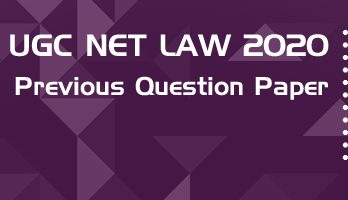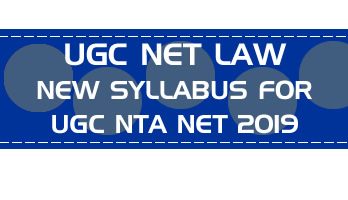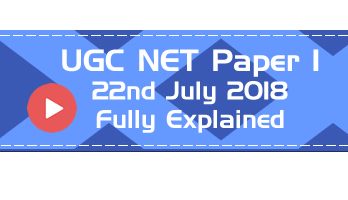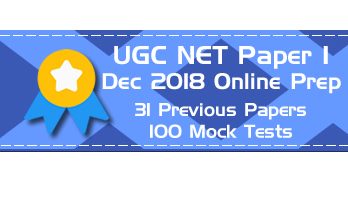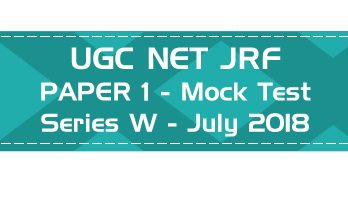- Latest Pattern Mock Tests including comprehension based questions
- Previous Question Papers with Answer Keys - From 2004 till the most recent exam
- 75 Full Length Mock Tests - New Pattern Paper II, with 100 questions each
- 50 Mini Practice Mock tests - with 25 questions each
- Unlimited Practice - New Questions in every attempt of all mocks
- Questions & Answer Choices randomly shuffled in every attempt for better practice
- Database of over 11000+ MCQs covering the entire syllabus
- Unlimited access and practice for one year from the date of purchase
- Accessible 24 x 7 via Smart-Phone browsers and Desktops
Authentic Feedback from previous LawMint users :
I got AIR 21 in CLAT PG. Thank you so much. Your mocks helped me a lot in my preparation 🙂 - Ayushi Jain
I have subscribed to your CLAT PG program and got AIR 36 in this year CLAT PG. I have also secured AIR 54 in AILET PG exam. I would like to thank you. Your mock paper really helps a lot - Shrashank Tripathi
I would like to thank you for the CLAT PG LLM COURSE. Practising mock tests there helped me in getting confidence and hence I was able to get AIR 45 in CLAT PG LLM - Akshay Awasthi
A year back, I relied on the IIT Kharagpur RGSOIPL mock test series by LawMint to prepare for my RGSOIPL entrance test. Few months back, I relied on your UGC NET Law series to prepare for UGC NET. I was the topper of the RGSOIPL entrance, and have cracked JRF in UGC NET. All thanks to LawMint - Anshuman Sahoo
"I got AIR 18 in CLAT PG and General Category rank 28 in AILET PG. I want to thank you for helping me practice well in controlled conditions from any place. It gave me a lot of confidence and I took the tests while travelling too. I also made it to IIT Kharagpur." - Vinodharani
"Lawmint has been of great help to me in securing AIR 25 in AILET PG and AIR 29 in CLAT PG examinations. The subjective and objective approach of the test series kept me up to date with the latest exam pattern." - Bhawna Nanda
"I, Nimmy Saira Zachariah joined you clat test series. I cleared AILET PG with 30th rank. Your test series were of immense help as it gave me clear idea of where my preparations stand thank you once again law mint." - Nimmy S Z
"Hey guys. Where do I start? If I thought that getting AIR 59 in Clat PG was it, then how wrong I was. With Lawmint now I have cracked UGC NET as well." - Joyanta Chakraborty
Note : Answer Keys to all Previous Question Papers published on LawMint are available to registered users of LawMint.com Online Practice Packs.
Check out all the HECI NTA NET or UGC CBSE NET Paper 1 previous question papers here : Previous Papers & Mock Tests
Note : UGC has rolled out a revised syllabus for both Papers 1 & 2 from Jan 2019 onward.
1. Which of the following represents one billion characters?
– Terabyte
– Kilobyte
– Megabyte
– Gigabyte
2. The factors which are most important in determining the impact of anthropogenic activities on environment are:
– Population, forest cover and land available per person
– Population, affluence per person, land available per person
– Population, affluence per person and the technology used for exploiting resources
– Atmospheric conditions, population and forest cover
3. Which one of the following represents the binary equivalent of the decimal number 25?
– 11011
– 10101
– 01101
– 11001
4. The University Grants Commission was established with which of the following aims?
(a) Promotion of research and development in higher education
(b) Identifying and sustaining institutions of potential learning
(c) Capacity building of teachers
(d) Providing, autonomy to each and every higher educational institution in India
– (a), (b) and (d)
– (a), (b), (c) and (d)
– (a), (b) and (c)
– (b), (c) and (d)
5. The session of the parliament is summoned by:
– The Speaker of the Lok Sabha and the Chairman of the Rajya Sabha
– The President
– The Prime Minister
– The Speaker of the Lok Sabha
6. India’s contribution to total global carbon dioxide emissions is about:
– ~15%
– ~3%
– ~6%
– ~10%
7. In which of the countries per capita use of water is maximum?
– India
– USA
– European Union
– China
8. Encoding or scrambling data for transmission across a network is known as:
– Decryption
– Protection
– Detection
– Encryption
9. Civil Service Day is celebrated in India on:
– 7th July
– 21st April
– 24th April
– 21st June
10. The South Asia University is situated in the city of:
– Kathmandu
– Colombo
– Dhaka
– New Delhi
11. Which is an instant messenger that is used for chatting?
– Google Talk
– AltaVista
– MAC
– Microsoft Office
12. The Gross Enrolment Ratio (GER) in institutions of higher education in India at present (2015) is about:
– 23 percent
– 8 percent
– 12 percent
– 19 percent
13. Two earthquakes A and B happen to be of magnitude 5 and 6 respectively on Richter Scale. The ratio of the energies released EB/EA will be approximately:
– ~64
– ~8
– ~16
– ~32
14. Which of the following is not an output device?
– Keyboard
– Printer
– Speaker
– Monitor
15. Which of the following is not open source software?
– Apache HTTP server
– Internet explorer
– Fedora Linux
– Open office
16. In the recently launched Air Quality Index in India, which of the following pollutants is not included?
– Chlorofluorocarbons
– Carbon monoxide
– Fine particulate matter
– Ozone
17. The total number of central universities in India in April 2015 was:
– 43
– 08
– 14
– 27
Answer: Marks given to all
18. Which of the following combinations represent renewable natural resources?
– Oil, forests and tides
– Fertile soil, fresh water and natural gas
– Clean air, phosphates and biological diversity
– Fishes, fertile soil and fresh water
19. Which of the following factors does not impact teaching?
– Learning through experience
– Teacher’s knowledge
– Class room activities that encourage learning
– Socio-economic background of teachers and students
20. Which of the following steps are required to design a questionnaire?
(a) Writing primary and secondary aims of the study.
(b) Review of the current literature.
(c) Prepare a draft of questionnaire.
(d) Revision of the draft.
– (a), (b), (c) and (d)
– (a), (b) and (c)
– (a), (c) and (d)
– (b), (c) and (d)
21. Which of the following is the highest level of cognitive ability?
– Evaluating
– Knowing
– Understanding
– Analysing
22. Achievement tests are commonly used for the purpose of:
– Assessing the amount of learning after teaching
– Making selections for a specific job
– Selecting candidates for a course
– Identifying strengths and weaknesses of learners
23. The conclusions/findings of which type of research cannot be generalized to other situations?
– Causal Comparative Research
– Historical Research
– Descriptive Research
– Experimental Research
24. Techniques used by a teacher to teach include:
(a) Lecture
(b) Interactive lecture
(c) Group work
(d) Self study
– (a), (b) and (d)
– (a), (b) and (c)
– (a), (b), (c) and (d)
– (b), (c) and (d)
25. A good thesis writing should involve:
(a) reduction of punctuation and grammatical errors to a minimum.
(b) careful checking of references.
(c) consistency in the way the thesis is written.
(d) a clear and well written abstract.
– (b), (c) and (d)
– (a), (b), (c) and (d)
– (a), (b) and (c)
– (a), (b) and (d)
26. Which of the following statements regarding the meaning of research are correct?
(a) Research refers to a series of systematic activity or activities undertaken to find out the solution of a problem.
(b) It is a systematic, logical and an unbiased process wherein verification of hypothesis, data analysis, interpretation and formation of principles can be done.
(c) It is an intellectual enquiry or quest towards truth.
(d) It leads to enhancement of knowledge.
– (a), (b), (c) and (d)
– (a), (b) and (c)
– (b), (c) and (d)
– (a), (c) and (d)
27. Jean Piaget gave a theory of cognitive development of humans on the basis of his:
– Evaluation Research
– Fundamental Research
– Applied Research
– Action Research
28. “Male and female students perform equally well in a numerical aptitude test.” This statement indicates a:
– statistical hypothesis
– research hypothesis
– null hypothesis
– directional hypothesis
29. Which of the following statements about teaching aids are correct?
(a) They help in retaining concepts for longer duration.
(b) They help students learn better.
(c) They make teaching learning process interesting.
(d) They enhance rote learning.
– (a), (b) and (d)
– (a), (b), (c) and (d)
– (a), (b) and (c)
– (b), (c) and (d)
30. A good teacher is one who:
– inspires students to learn
– gives useful information
– explains concepts and principles
– gives Printed notes to students
31. Read the following passage carefully and answer the question :
Story telling is not in our genes. Neither it is an evolutionary history. It is the essence of what makes us Human.Human beings progress by telling stories. One event can result in a great variety of stories being told about it. Sometimes those stories differ greatly. Which stories are picked up and repeated and which ones are dropped and forgotten often determines how we progress. Our history, knowledge and understanding are all the collections of the few stories that survive. This includes the stories that we tell each other about the future. And how the future will turn out depends partly, possibly largely, on which stories we collectively choose to believe.
Some stories are designed to spread fear and concern. This is because some story-tellers feel that there is a need to raise some tensions. Some stories are frightening, they are like totemic warnings: “Fail to act now and we are all doomed.” Then there are stories that indicate that all will be fine so long as we leave everything upto a few especially able adults. Currently, this trend is being led by those who call themselves “rational optimists”. They tend to claim that it is human nature to compete and to succeed and also to profit at the expense of others. The rational optimists however, do not realize how humanity has progressed overtime through amiable social networks and how large groups work in less selfishness and in the process accommodate rich and poor, high and low alike. This aspect in story-telling is considered by the ‘Practical Possibles’, who sit between those who say all is fine and cheerful and be individualistic in your approach to a successful future, and those who ordain pessimism and fear that we are doomed.
What the future holds for us is which stories we hold on to and how we act on them.
Rational optimists:
(a) Look for opportunities.
(b) Are sensible and cheerful.
(c) Are selfishly driven.
– (b) and (c) only
– (a), (b) and (c)
– (a) only
– (a) and (b) only
32. Read the following passage carefully and answer the question :
Story telling is not in our genes. Neither it is an evolutionary history. It is the essence of what makes us Human.Human beings progress by telling stories. One event can result in a great variety of stories being told about it. Sometimes those stories differ greatly. Which stories are picked up and repeated and which ones are dropped and forgotten often determines how we progress. Our history, knowledge and understanding are all the collections of the few stories that survive. This includes the stories that we tell each other about the future. And how the future will turn out depends partly, possibly largely, on which stories we collectively choose to believe.
Some stories are designed to spread fear and concern. This is because some story-tellers feel that there is a need to raise some tensions. Some stories are frightening, they are like totemic warnings: “Fail to act now and we are all doomed.” Then there are stories that indicate that all will be fine so long as we leave everything upto a few especially able adults. Currently, this trend is being led by those who call themselves “rational optimists”. They tend to claim that it is human nature to compete and to succeed and also to profit at the expense of others. The rational optimists however, do not realize how humanity has progressed overtime through amiable social networks and how large groups work in less selfishness and in the process accommodate rich and poor, high and low alike. This aspect in story-telling is considered by the ‘Practical Possibles’, who sit between those who say all is fine and cheerful and be individualistic in your approach to a successful future, and those who ordain pessimism and fear that we are doomed.
What the future holds for us is which stories we hold on to and how we act on them.
Humans become less selfish when:
– they work in solitude
– they work in large groups
– they listen to frightening stories
– they listen to cheerful stories
33. Read the following passage carefully and answer the question :
Story telling is not in our genes. Neither it is an evolutionary history. It is the essence of what makes us Human.Human beings progress by telling stories. One event can result in a great variety of stories being told about it. Sometimes those stories differ greatly. Which stories are picked up and repeated and which ones are dropped and forgotten often determines how we progress. Our history, knowledge and understanding are all the collections of the few stories that survive. This includes the stories that we tell each other about the future. And how the future will turn out depends partly, possibly largely, on which stories we collectively choose to believe.
Some stories are designed to spread fear and concern. This is because some story-tellers feel that there is a need to raise some tensions. Some stories are frightening, they are like totemic warnings: “Fail to act now and we are all doomed.” Then there are stories that indicate that all will be fine so long as we leave everything upto a few especially able adults. Currently, this trend is being led by those who call themselves “rational optimists”. They tend to claim that it is human nature to compete and to succeed and also to profit at the expense of others. The rational optimists however, do not realize how humanity has progressed overtime through amiable social networks and how large groups work in less selfishness and in the process accommodate rich and poor, high and low alike. This aspect in story-telling is considered by the ‘Practical Possibles’, who sit between those who say all is fine and cheerful and be individualistic in your approach to a successful future, and those who ordain pessimism and fear that we are doomed.
What the future holds for us is which stories we hold on to and how we act on them.
‘Practical Possibles’ are the ones who:
– are cheerful and carefree
– follow Midway Path
– are doom-mongers
– are self-centred
34. Read the following passage carefully and answer the question :
Story telling is not in our genes. Neither it is an evolutionary history. It is the essence of what makes us Human.Human beings progress by telling stories. One event can result in a great variety of stories being told about it. Sometimes those stories differ greatly. Which stories are picked up and repeated and which ones are dropped and forgotten often determines how we progress. Our history, knowledge and understanding are all the collections of the few stories that survive. This includes the stories that we tell each other about the future. And how the future will turn out depends partly, possibly largely, on which stories we collectively choose to believe.
Some stories are designed to spread fear and concern. This is because some story-tellers feel that there is a need to raise some tensions. Some stories are frightening, they are like totemic warnings: “Fail to act now and we are all doomed.” Then there are stories that indicate that all will be fine so long as we leave everything upto a few especially able adults. Currently, this trend is being led by those who call themselves “rational optimists”. They tend to claim that it is human nature to compete and to succeed and also to profit at the expense of others. The rational optimists however, do not realize how humanity has progressed overtime through amiable social networks and how large groups work in less selfishness and in the process accommodate rich and poor, high and low alike. This aspect in story-telling is considered by the ‘Practical Possibles’, who sit between those who say all is fine and cheerful and be individualistic in your approach to a successful future, and those who ordain pessimism and fear that we are doomed.
What the future holds for us is which stories we hold on to and how we act on them.
Story telling is:
– the essence of what makes us human
– an art
– a science
– in our genes
35. Read the following passage carefully and answer the question :
Story telling is not in our genes. Neither it is an evolutionary history. It is the essence of what makes us Human.Human beings progress by telling stories. One event can result in a great variety of stories being told about it. Sometimes those stories differ greatly. Which stories are picked up and repeated and which ones are dropped and forgotten often determines how we progress. Our history, knowledge and understanding are all the collections of the few stories that survive. This includes the stories that we tell each other about the future. And how the future will turn out depends partly, possibly largely, on which stories we collectively choose to believe.
Some stories are designed to spread fear and concern. This is because some story-tellers feel that there is a need to raise some tensions. Some stories are frightening, they are like totemic warnings: “Fail to act now and we are all doomed.” Then there are stories that indicate that all will be fine so long as we leave everything upto a few especially able adults. Currently, this trend is being led by those who call themselves “rational optimists”. They tend to claim that it is human nature to compete and to succeed and also to profit at the expense of others. The rational optimists however, do not realize how humanity has progressed overtime through amiable social networks and how large groups work in less selfishness and in the process accommodate rich and poor, high and low alike. This aspect in story-telling is considered by the ‘Practical Possibles’, who sit between those who say all is fine and cheerful and be individualistic in your approach to a successful future, and those who ordain pessimism and fear that we are doomed.
What the future holds for us is which stories we hold on to and how we act on them.
Our knowledge is a collection of:
– some important stories
– all stories that we have heard during our life-time
– some stories that we remember
– a few stories that survive
36. Read the following passage carefully and answer the question :
Story telling is not in our genes. Neither it is an evolutionary history. It is the essence of what makes us Human.Human beings progress by telling stories. One event can result in a great variety of stories being told about it. Sometimes those stories differ greatly. Which stories are picked up and repeated and which ones are dropped and forgotten often determines how we progress. Our history, knowledge and understanding are all the collections of the few stories that survive. This includes the stories that we tell each other about the future. And how the future will turn out depends partly, possibly largely, on which stories we collectively choose to believe.
Some stories are designed to spread fear and concern. This is because some story-tellers feel that there is a need to raise some tensions. Some stories are frightening, they are like totemic warnings: “Fail to act now and we are all doomed.” Then there are stories that indicate that all will be fine so long as we leave everything upto a few especially able adults. Currently, this trend is being led by those who call themselves “rational optimists”. They tend to claim that it is human nature to compete and to succeed and also to profit at the expense of others. The rational optimists however, do not realize how humanity has progressed overtime through amiable social networks and how large groups work in less selfishness and in the process accommodate rich and poor, high and low alike. This aspect in story-telling is considered by the ‘Practical Possibles’, who sit between those who say all is fine and cheerful and be individualistic in your approach to a successful future, and those who ordain pessimism and fear that we are doomed.
What the future holds for us is which stories we hold on to and how we act on them.
How the future will turn out to be, depends upon the stories?
– Designed to make prophecy
– We collectively choose to believe in
– Which are repeatedly narrated
– Designed to spread fear and tension
37. At present a person is 4 times older than his son and is 3 years older than his wife. After 3 years the age of the son will be 15 years. The age of the person’s wife after 5 years will be:
– 50
– 42
– 48
– 45
38. Among the following statements two are contradictory to each other. Select the correct code that represents them:
(a) All poets are philosophers.
(b) Some poets are philosophers.
(c) Some poets are not philosophers.
(d) No philosopher is a poet.
– (b) and (c)
– (a) and (b)
– (a) and (d)
– (a) and (c)
39. In an examination 10,000 students appeared. The result revealed the number of students who have :
passed in all five subjects = 5583
passed in three subjects only = 1400
passed in two subjects only = 1200
passed in one subject only 735
failed in English only = 75
failed in Physics only = 145
failed in Chemistry only = 140
failed in Mathematics only = 200
failed in Bio-science only = 157
The number of students passed in at least four subjects is:
– 7900
– 6300
– 6900
– 7300
40. Which of the following is not a principle of effective communication?
– Strategic use of grapevine
– Persuasive and convincing dialogue
– Participation of the audience
– One-way transfer of information
41. In communication, the language is:
– The non-verbal code
– The verbal code
– Intrapersonal
– The symbolic code
42. When the purpose of a definition is to explain the use or to eliminate ambiguity the definition is called:
– Persuasive
– Stipulative
– Theoretical
– Lexical
43. A deductive argument is invalid if:
– Its premises and conclusions are all true
– Its premises and conclusions are all false
– Its premises are true but its conclusion is false
– Its premises are false but its conclusion is true
44. Which of the following are the characteristic features of communication?
(a) Communication involves exchange of ideas, facts and opinions.
(b) Communication involves both information and understanding.
(c) Communication is a continuous process.
(d) Communication is a circular process.
– (a), (b), (c) and (d)
– (a), (b) and (c)
– (a), (b) and (d)
– (b), (c) and (d)
45. Which of the codes given below contains only the correct statements?
(a) Venn diagram represents the arguments graphically.
(b) Venn diagram can enhance our understanding.
(c) Venn diagram may be called valid or invalid.
(d) Venn diagram is clear method of notation.
– (a), (c) and (d)
– (a), (b) and (c)
– (a), (b) and (d)
– (b), (c) and (d)
46. The next term in the series is: 2, 5, 9, 19, 37, ?
– 80
– 73
– 75
– 78
47. Inductive reasoning is grounded on:
– Harmony of nature
– Integrity of nature
– Unity of nature
– Uniformity of nature
48. If we want to seek new knowledge of facts about the world, we must rely on reason of the type:
– Physiological
– Inductive
– Deductive
– Demonstrative
49. Effectiveness of communication can be traced from which of the following?
(a) Attitude surveys
(b) Performance records
(c) Students attendance
(d) Selection of communication channel
– (a), (b) and (d)
– (a), (b), (c) and (d)
– (a), (b) and (c)
– (b), (c) and (d)
50. One day Prakash left home and walked 10 km towards south, turned right and walked 5 km, turned right and walked 10 km and turned left and walked 10 km. How many km will he have to walk to reach his home straight?
– 30
– 10
– 20
– 15
51. A girl introduced a boy as the son of the daughter of the father of her uncle. The boy is related to the girl as:
– Son
– Brother
– Uncle
– Nephew
52. In certain code MATHURA is coded as JXQEROX. The code of HOTELS will be:
– ELIPQB
– LEQIBP
– ELQBIP
– LEBIQP
53. The term ‘grapevine’ is also known as:
– Horizontal communication
– Downward communication
– Informal communication
– Upward communication
54. Assertion (A): Formal communication tends to be fast and flexible.
Reason (R): Formal communication is a systematic and orderly flow of information.
– (A) is false but, (R) is correct
– Both (A) and (R) are correct and (R) is correct explanation of (A)
– Both (A) and (R) are correct, but (R) is not correct explanation of (A)
– (A) is correct but, (R) is false
55. Question is based on the tabulated data given below :
A company has 20 employees with their age (in years) and salary (in thousand rupees per month) mentioned against each of them:
| S.No. | Age (in years) | Salary | S.No. | Age (in years) | Salary |
| 1. | 44 | 35 | 11. | 33 | 30 |
| 2. | 32 | 20 | 12. | 31 | 35 |
| 3. | 54 | 45 | 13. | 30 | 35 |
| 4. | 42 | 35 | 14. | 37 | 40 |
| 5. | 31 | 20 | 15. | 44 | 45 |
| 6. | 53 | 60 | 16. | 36 | 35 |
| 7. | 42 | 50 | 17. | 34 | 35 |
| 8. | 51 | 55 | 18. | 49 | 50 |
| 9. | 34 | 25 | 19. | 43 | 45 |
| 10. | 41 | 30 | 20. | 45 | 50 |
What is the average salary (in thousand per month) in the age group 40-50 years?
– 36.5
– 35
– 42.5
– 40.5
56. Question is based on the tabulated data given below :
A company has 20 employees with their age (in years) and salary (in thousand rupees per month) mentioned against each of them:
| S.No. | Age (in years) | Salary | S.No. | Age (in years) | Salary |
| 1. | 44 | 35 | 11. | 33 | 30 |
| 2. | 32 | 20 | 12. | 31 | 35 |
| 3. | 54 | 45 | 13. | 30 | 35 |
| 4. | 42 | 35 | 14. | 37 | 40 |
| 5. | 31 | 20 | 15. | 44 | 45 |
| 6. | 53 | 60 | 16. | 36 | 35 |
| 7. | 42 | 50 | 17. | 34 | 35 |
| 8. | 51 | 55 | 18. | 49 | 50 |
| 9. | 34 | 25 | 19. | 43 | 45 |
| 10. | 41 | 30 | 20. | 45 | 50 |
What is the average salary (in thousand per month) in the age group 40-50 years?
– 47%
– 45%
– 50%
– 55%
57. Question is based on the tabulated data given below :
A company has 20 employees with their age (in years) and salary (in thousand rupees per month) mentioned against each of them:
| S.No. | Age (in years) | Salary | S.No. | Age (in years) | Salary |
| 1. | 44 | 35 | 11. | 33 | 30 |
| 2. | 32 | 20 | 12. | 31 | 35 |
| 3. | 54 | 45 | 13. | 30 | 35 |
| 4. | 42 | 35 | 14. | 37 | 40 |
| 5. | 31 | 20 | 15. | 44 | 45 |
| 6. | 53 | 60 | 16. | 36 | 35 |
| 7. | 42 | 50 | 17. | 34 | 35 |
| 8. | 51 | 55 | 18. | 49 | 50 |
| 9. | 34 | 25 | 19. | 43 | 45 |
| 10. | 41 | 30 | 20. | 45 | 50 |
What is the average salary (in thousand per month) in the age group 40-50 years?
– 35%
– 20%
– 25%
– 30%
58. Question is based on the tabulated data given below :
A company has 20 employees with their age (in years) and salary (in thousand rupees per month) mentioned against each of them:
| S.No. | Age (in years) | Salary | S.No. | Age (in years) | Salary |
| 1. | 44 | 35 | 11. | 33 | 30 |
| 2. | 32 | 20 | 12. | 31 | 35 |
| 3. | 54 | 45 | 13. | 30 | 35 |
| 4. | 42 | 35 | 14. | 37 | 40 |
| 5. | 31 | 20 | 15. | 44 | 45 |
| 6. | 53 | 60 | 16. | 36 | 35 |
| 7. | 42 | 50 | 17. | 34 | 35 |
| 8. | 51 | 55 | 18. | 49 | 50 |
| 9. | 34 | 25 | 19. | 43 | 45 |
| 10. | 41 | 30 | 20. | 45 | 50 |
What is the average salary (in thousand per month) in the age group 40-50 years?
– 32%
– 45%
– 50%
– 35%
59. Question is based on the tabulated data given below :
A company has 20 employees with their age (in years) and salary (in thousand rupees per month) mentioned against each of them:
| S.No. | Age (in years) | Salary | S.No. | Age (in years) | Salary |
| 1. | 44 | 35 | 11. | 33 | 30 |
| 2. | 32 | 20 | 12. | 31 | 35 |
| 3. | 54 | 45 | 13. | 30 | 35 |
| 4. | 42 | 35 | 14. | 37 | 40 |
| 5. | 31 | 20 | 15. | 44 | 45 |
| 6. | 53 | 60 | 16. | 36 | 35 |
| 7. | 42 | 50 | 17. | 34 | 35 |
| 8. | 51 | 55 | 18. | 49 | 50 |
| 9. | 34 | 25 | 19. | 43 | 45 |
| 10. | 41 | 30 | 20. | 45 | 50 |
What is the average salary (in thousand per month) in the age group 40-50 years?
– 45.3 years
– 40.3 years
– 38.6 years
– 47.2 years
60. Question is based on the tabulated data given below :
A company has 20 employees with their age (in years) and salary (in thousand rupees per month) mentioned against each of them:
| S.No. | Age (in years) | Salary | S.No. | Age (in years) | Salary |
| 1. | 44 | 35 | 11. | 33 | 30 |
| 2. | 32 | 20 | 12. | 31 | 35 |
| 3. | 54 | 45 | 13. | 30 | 35 |
| 4. | 42 | 35 | 14. | 37 | 40 |
| 5. | 31 | 20 | 15. | 44 | 45 |
| 6. | 53 | 60 | 16. | 36 | 35 |
| 7. | 42 | 50 | 17. | 34 | 35 |
| 8. | 51 | 55 | 18. | 49 | 50 |
| 9. | 34 | 25 | 19. | 43 | 45 |
| 10. | 41 | 30 | 20. | 45 | 50 |
What is the average salary (in thousand per month) in the age group 40-50 years?
– 50-55 years
– 35-40 years
– 40-45 years
– 45-50 years
- Latest Pattern Mock Tests including comprehension based questions
- Previous Question Papers with Answer Keys - From 2004 till the most recent exam
- 75 Full Length Mock Tests - New Pattern Paper II, with 100 questions each
- 50 Mini Practice Mock tests - with 25 questions each
- Unlimited Practice - New Questions in every attempt of all mocks
- Questions & Answer Choices randomly shuffled in every attempt for better practice
- Database of over 11000+ MCQs covering the entire syllabus
- Unlimited access and practice for one year from the date of purchase
- Accessible 24 x 7 via Smart-Phone browsers and Desktops
Authentic Feedback from previous LawMint users :
I got AIR 21 in CLAT PG. Thank you so much. Your mocks helped me a lot in my preparation 🙂 - Ayushi Jain
I have subscribed to your CLAT PG program and got AIR 36 in this year CLAT PG. I have also secured AIR 54 in AILET PG exam. I would like to thank you. Your mock paper really helps a lot - Shrashank Tripathi
I would like to thank you for the CLAT PG LLM COURSE. Practising mock tests there helped me in getting confidence and hence I was able to get AIR 45 in CLAT PG LLM - Akshay Awasthi
A year back, I relied on the IIT Kharagpur RGSOIPL mock test series by LawMint to prepare for my RGSOIPL entrance test. Few months back, I relied on your UGC NET Law series to prepare for UGC NET. I was the topper of the RGSOIPL entrance, and have cracked JRF in UGC NET. All thanks to LawMint - Anshuman Sahoo
"I got AIR 18 in CLAT PG and General Category rank 28 in AILET PG. I want to thank you for helping me practice well in controlled conditions from any place. It gave me a lot of confidence and I took the tests while travelling too. I also made it to IIT Kharagpur." - Vinodharani
"Lawmint has been of great help to me in securing AIR 25 in AILET PG and AIR 29 in CLAT PG examinations. The subjective and objective approach of the test series kept me up to date with the latest exam pattern." - Bhawna Nanda
"I, Nimmy Saira Zachariah joined you clat test series. I cleared AILET PG with 30th rank. Your test series were of immense help as it gave me clear idea of where my preparations stand thank you once again law mint." - Nimmy S Z
"Hey guys. Where do I start? If I thought that getting AIR 59 in Clat PG was it, then how wrong I was. With Lawmint now I have cracked UGC NET as well." - Joyanta Chakraborty
Note : Answer Keys to all Previous Question Papers published on LawMint are available to registered users of our Online Practice Packs.
Check out all the HECI NTA NET or UGC CBSE NET Paper 1 previous question papers here : Previous Papers & Mock Tests


